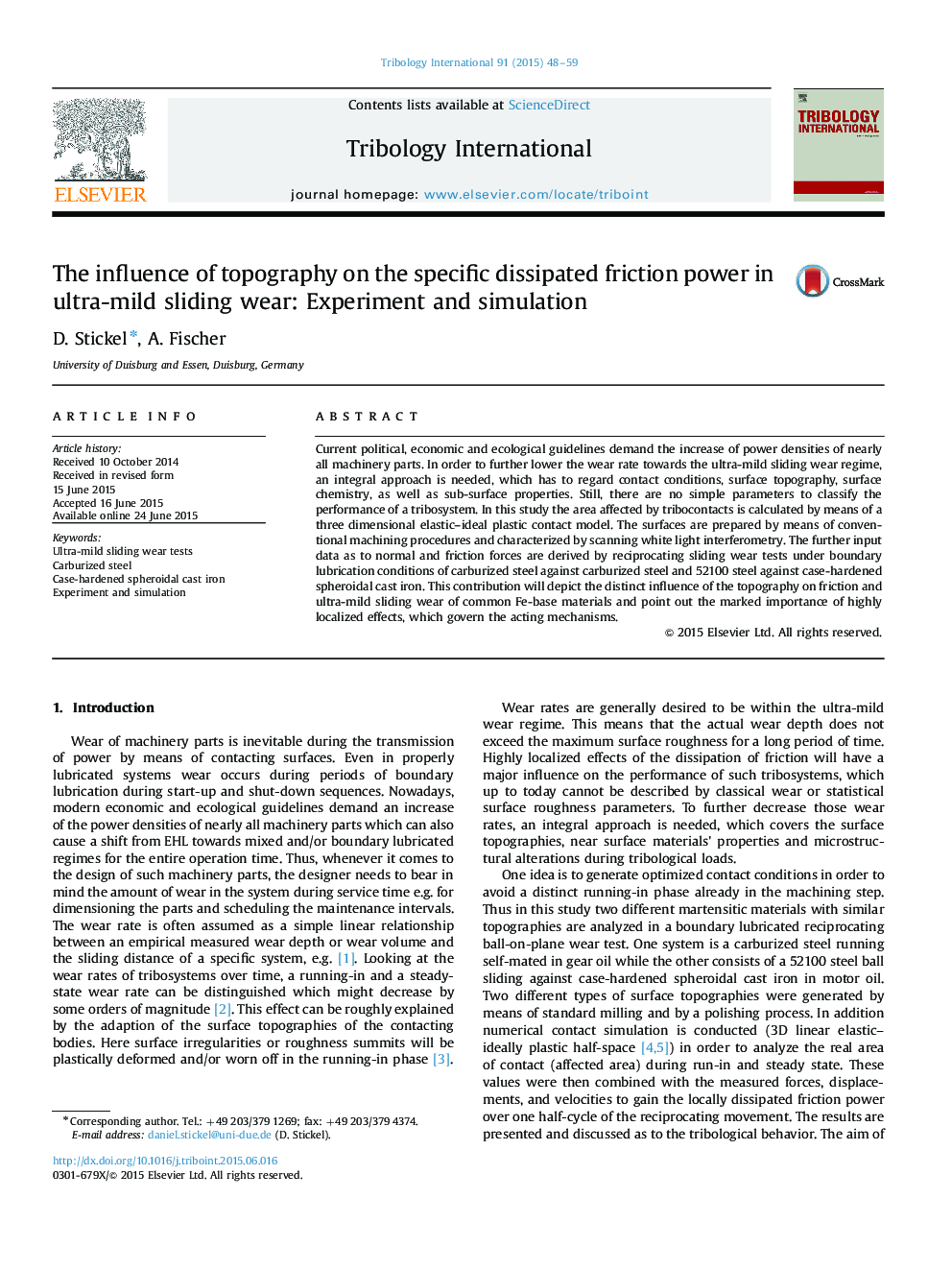| Article ID | Journal | Published Year | Pages | File Type |
|---|---|---|---|---|
| 614402 | Tribology International | 2015 | 12 Pages |
Abstract
Current political, economic and ecological guidelines demand the increase of power densities of nearly all machinery parts. In order to further lower the wear rate towards the ultra-mild sliding wear regime, an integral approach is needed, which has to regard contact conditions, surface topography, surface chemistry, as well as sub-surface properties. Still, there are no simple parameters to classify the performance of a tribosystem. In this study the area affected by tribocontacts is calculated by means of a three dimensional elastic-ideal plastic contact model. The surfaces are prepared by means of conventional machining procedures and characterized by scanning white light interferometry. The further input data as to normal and friction forces are derived by reciprocating sliding wear tests under boundary lubrication conditions of carburized steel against carburized steel and 52100 steel against case-hardened spheroidal cast iron. This contribution will depict the distinct influence of the topography on friction and ultra-mild sliding wear of common Fe-base materials and point out the marked importance of highly localized effects, which govern the acting mechanisms.
Related Topics
Physical Sciences and Engineering
Chemical Engineering
Colloid and Surface Chemistry
Authors
D. Stickel, A. Fischer,
